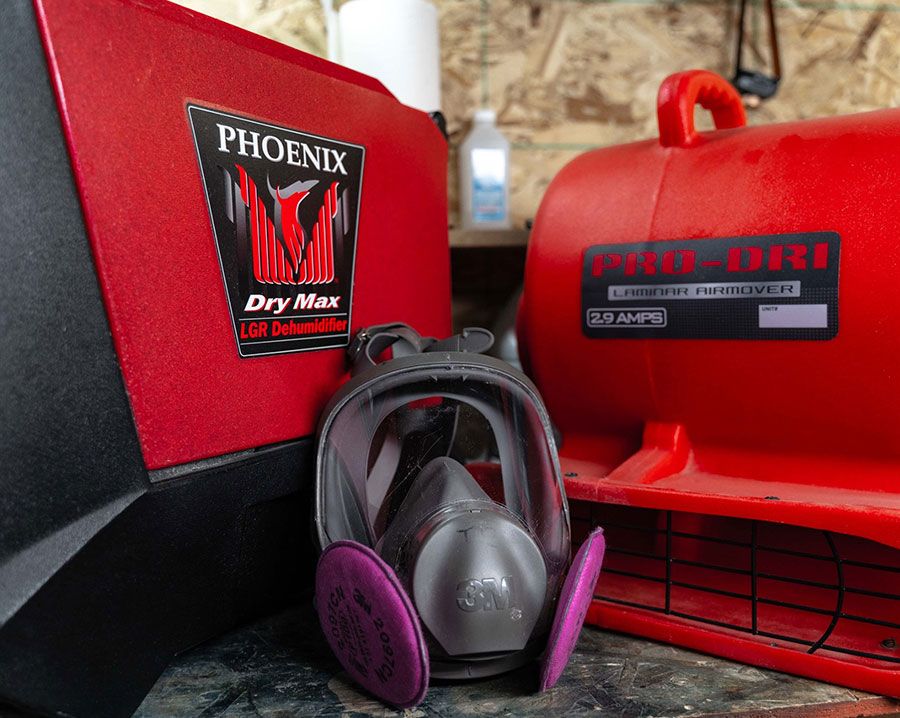Imagine a stormy night with rain pouring down. It might seem cozy to watch from home. But, water can harm your structure quickly. Even a small leak can cause big problems if not fixed fast.
The damage from water can happen fast and be very serious. It can turn a small issue into a big and expensive problem. Knowing how quickly water can damage a building is key to protecting your property and keeping everyone safe.
Key Takeaways
- Water-induced structural deterioration can start immediately after water exposure.
- The effects of water on structures are both swift and severe.
- Timely identification and resolution of water issues prevent costly repairs.
- Ignoring minor water ingress can escalate into major structural damage.
- Understanding the timeline of water damage is critical for property maintenance.
Initial Signs of Water Damage
Spotting the first signs of water damage in buildings is key to avoiding long-term problems. Catching these early signs can stop water damage from getting worse.
Common Indicators
When checking for water damage, look out for these signs:
- Hairline cracks: Cracks on walls and ceilings might mean water is getting in.
- Paint bubbles: Bubbles or blisters in paint suggest moisture under the surface.
- Peeling wallpaper: Wallpaper peeling off can show rising dampness.
- Musty odors: A constant musty smell often means mold or mildew from moisture.
- Warped surfaces: Floors and walls warping or rippling can happen when they soak up too much water.
Sources of Water Damage
Knowing where water damage comes from helps prevent it:
- Appliance malfunctions: Faulty appliances like dishwashers or washing machines can leak, causing significant water damage progression over time.
- Plumbing failures: Broken or leaking pipes are common sources of water infiltration impact and can lead to extensive structural damage.
- Damaged roofs: Roofs with missing or broken shingles can allow water to seep into the building.
- Poor drainage: Inadequate drainage systems can result in water pooling near the foundation, causing damage.
- Natural disasters: Floods, storms, and hurricanes can cause sudden and severe water infiltration, leading to extensive damage.
Water Damage Timeline
Knowing the water damage timeline is key to fixing it fast. Quick action stops more damage and keeps everyone safe. Here’s a look at the water damage stages and why acting quickly is important.
First 24 Hours
In the first 24 hours, water soaks into things like walls, floors, and furniture. It’s vital to act fast in this time to cut down on damage. Quick drying and removing water stop permanent harm and mold.
24 to 72 Hours
Between 24 to 72 hours, damage gets worse. Wood gets bigger and warps, metal gets rusty, and drywall falls apart. Mold starts to grow, harming buildings and health. This time is key for drying and getting rid of moisture to lessen damage.
72 Hours to a Week
From 72 hours to a week, damage gets even worse. Buildings can become unsafe. Mold spreads fast, getting into walls and furniture. Quick action in this phase is critical to avoid high repair costs and big fixes.
Beyond 7 Days
After a week, damage is too far gone. Mold makes buildings unsafe and unhealthy. Fixing damage takes longer and costs more. Experts must step in to make buildings safe and usable again.
How Long Does It Take for Water to Cause Structural Damage?
It’s important to know how long water can damage buildings. Water damage starts right away but shows up differently based on how long it’s exposed and how much water there is. This part talks about the damage from a little bit of water to a lot.
Minor Water Damage
Minor water damage is when water gets up to 1 inch deep. It causes stains and small warps right away. The damage is mostly on the surface, like on wood and drywall. But, if not fixed quickly, it can weaken the building over time.
Moderate to Severe Water Damage
When water gets between 1 to 2 inches deep, it’s more serious. At this level, water gets deeper into the building. It can damage insulation, electrical systems, and walls that hold up the building. If left for too long, it can make the building unsafe.
- Initial Impact: Compromised surface structures.
- Extended Exposure: Damage to insulation and electrical systems.
- Severe Damage: Possible collapse of key structural elements.
Understanding how water damages buildings is key to managing water damage. Quick action can stop small problems from getting worse and more expensive.
Conclusion
Knowing how fast and how much water damage can harm is key for anyone who owns or manages property. This article has shown how important it is to spot water damage early and act quickly. Doing so can greatly reduce the harm water can cause to a building.
Water damage doesn’t wait. Small leaks can quickly turn into big problems if not fixed right away. This can lead to expensive repairs and health risks. It’s important for property managers to check their buildings often and fix any water damage they find.
To manage water damage well, you need to spot it fast, act quickly, and keep up with maintenance. Knowing how water damage gets worse helps property owners protect their investments. Taking steps to prevent damage keeps buildings safe and healthy for a long time.




















